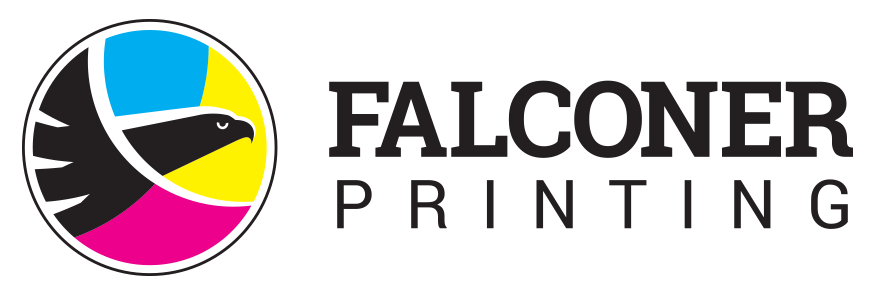At what resolution should I save my photos and graphics?
Resolution should be set to 300 dpi. Pictures and graphics pulled from the internet are often low resolution, typically 72 dpi or 96 dpi. Avoid these graphics, as they will appear pixilated and blocky when printed. Also note that you should save all photos in CMYK mode, not RGB mode when possible. Images saved in RGB mode may not print properly. If you are unable to save your image in CYMK mode, please let us know.
How do I go about getting an estimate from you?
Well, since you are here, we would suggest you use our online estimate request form. Otherwise, the best way to ensure that we get all the information necessary to do an accurate quote is to give us a call and talk with one of our customer service representatives.
How long will it take to complete my order?
That depends upon the job. A simple job can be completed at times in a matter of hours. Complex jobs may take several weeks. Contact a CSR to discuss your job and get a idea for a delivery time.
Is white considered a printing color?
Not typically, no. White is generally displayed as an absence of printing. White areas simply mean the toner or ink are not applied, letting the paper show through. However, if you’re printing on a colored stock, white ink or toner may be needed to compensate for the non-white color of the paper.
How should I save my design files?
In order to make them print ready and acceptable for us to work with, please save your files as follows:
- Embed all images
- Convert text/copy to paths or outlines
- Export as EPS file
- If using Pagemaker, save as Postscript Level 2, CMYK Mode, TIFF format and Binary setting
- If using Publisher, select File/Print/Adobe PDF writer, and select Press Quality from the Properties options.
What are the comparative advantages of producing my job on your duplicating devices versus producing them on your presses?
The advantages of our duplicating devices are best realized on runs of 1,000 or less requiring black printing and where a fast turnaround is needed. If the piece included photos or halftone screens the copy quality would be lower than that achieved by the printing process. On longer runs or where multiple colors are desired, as well as when screens or halftones require higher quality, offset printing would be the best alternative. The only disadvantage of the printing process would be the longer production time requirements.
PDF (Portable Document Format) is the most common and preferred file format for submitting digital documents. With the installation of a PDF print driver on your computer, virtually any program can generate a PDF file suitable for printing. Both commercial and free PDF print drivers are available online for download from different sources.
What is a “proof”?
A proof is a way of ensuring that we have set your type accurately and that everything is positioned according to your requirements. Typically, we will produce a proof which will be sent to you online or printed on paper which can be viewed in our store or delivered to you in person. On multiple color jobs, we can produce an inkjet color proof on our color output device to show how the different colors will appear.
What is the Pantone Matching System?
The Pantone Matching System (PMS) is a color reproduction standard in which colors all across the spectrum are each identified by a unique, independent number. The use of PMS allows us to precisely match colors and maintain color consistency throughout the printing process.
What other services does Falconer Printing offer?
Copy Services: Our high-speed duplicators can produce copies efficiently and economically whether you provide hard copy or bring in digital files on disk. Our state of the art production duplicating equipment allow us to deliver work quickly and efficiently.
Printing Services: From one-color to full-color printing, our plant has the capability to meet your needs. From short run to long run, we can offer a solution that will be just right for you.
Finishing Services: We can cut, perforate, score, number, fold, collate, saddle stitch, bind, and just about any other bindery process you could ever need.
Design Services: We utilize the latest design technology available in order to offer a full range of design services. If you need a brochure produced, we can work from your camera ready copy, use the files you provide on disk, or design your brochure from scratch.
Commercial Photography: Catalog, industrial, architectural photography.
Mailings: List management, postal pre-sorting, variable data services, and a number of fulfillment projects all fall under the umbrella of Falconer Printing’s services.
Banners & Signs: Cut vinyl, grommeted vinyl banners, metal signage, vacuum-molded signage and even yard signs are just a handful of specialty, wide-format projects we offer.
Why do the printed colors look different from the colors on my screen?In short, printers and monitors produce colors in different ways. Monitors use the RGB (red, green, blue) color model, which usually supports a wider spectrum of colors. Printers use the CMYK (cyan, magenta, yellow, black) color model, which can reproduce most—but not all—of the colors in the RGB color model. Depending on the equipment used, CMYK generally matches 85–90% of the colors in the RGB model. When a color is selected from the RGB model that is out of the range of the CMYK model, the application chooses what it thinks is the closest color that will match. Programs like Adobe Photoshop will allow you to choose which color will be replaced. Others may not.

